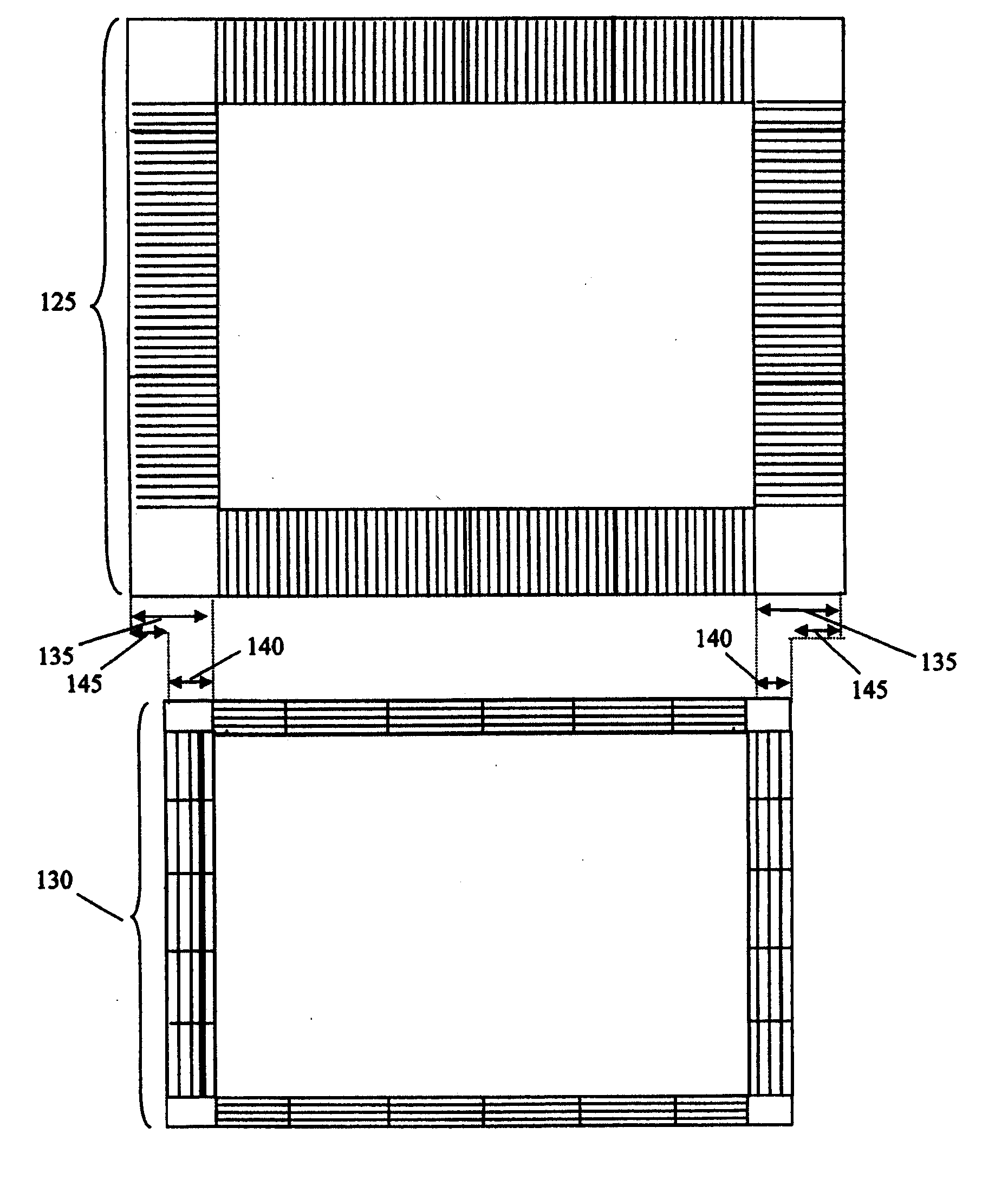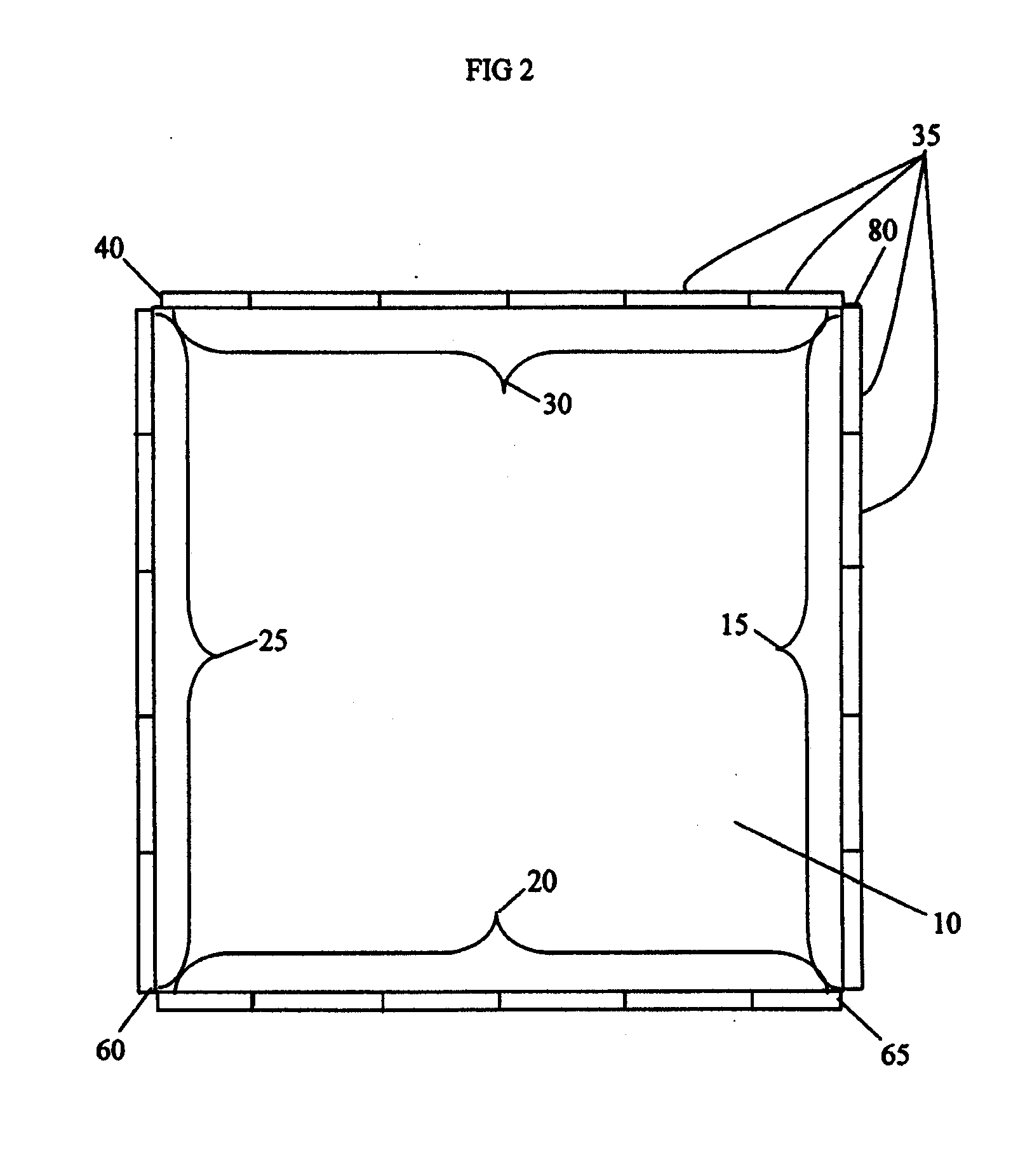Method and apparatus of optimizing the IO collar of a peripheral image
- Summary
- Abstract
- Description
- Claims
- Application Information
AI Technical Summary
Benefits of technology
Problems solved by technology
Method used
Image
Examples
first embodiment
[0035] Referring to FIG. 1, steps of a method for optimizing an IO collar is shown where the first step includes receiving the customer inputs S100. Next, an IC chip core dimensions are determined, which may include determining the aspect ratio of the IC core cell area (S110). As used herein, “IC core cell” is synonymous with “IC core.” Typically, determining the aspect ratio includes finding the smallest core size and aspect ratio to meet total number of core cells (CELLS)>=CELLS_required. For example, the aspect ratio may not equal one in order to optimize for the constraints described in “Required customer inputs” above.
[0036] Next, the number of IO cells per row is determined (S120). Specifically, the number of rotated IOs in a single row that can fit around the IC chip is determined. After the number of rotated IO cells in a single row around the chip is found, the total number of needed IO cells is found (S130). This is done by taking the total SIO count plus the number of unu...
third embodiment
[0057] Referring to FIG. 8, another example of an IO collar produced by the third embodiment is shown. In FIG. 8, an IC chip 10 has both rotated 35 and non-rotated 110 IO cells around it. It should be noted that each particular edge of the IC chip 10 could have only rotated IO cells 35 or non-rotated IO cells 110. Accordingly, the edge 15 of the IC chip 10 has a single row 120 of non-rotated IO cells 110. Similarly, the edge 25 has a single row 115 of non-rotated IO cells 110. The edge 20 of the IC chip 10 has three rows 65, 70, and 75 of rotated IO cells 35. The edge 30 has four rows 40, 45, 50, and 55 of rotated IO cells 35. As such, the edge 20 and the edge 30 both contain rotated IO cells 35, however, each edge has a different number of rows of IO cells 35. Accordingly, the number of rotated IO cells 35 may be adjusted on each edge to optimize the size of the IO cell collar.
[0058] Referring to FIG. 9, the overall size of an IC chip and associated traditional IO collar 125 is sho...
PUM
 Login to View More
Login to View More Abstract
Description
Claims
Application Information
 Login to View More
Login to View More - R&D
- Intellectual Property
- Life Sciences
- Materials
- Tech Scout
- Unparalleled Data Quality
- Higher Quality Content
- 60% Fewer Hallucinations
Browse by: Latest US Patents, China's latest patents, Technical Efficacy Thesaurus, Application Domain, Technology Topic, Popular Technical Reports.
© 2025 PatSnap. All rights reserved.Legal|Privacy policy|Modern Slavery Act Transparency Statement|Sitemap|About US| Contact US: help@patsnap.com



